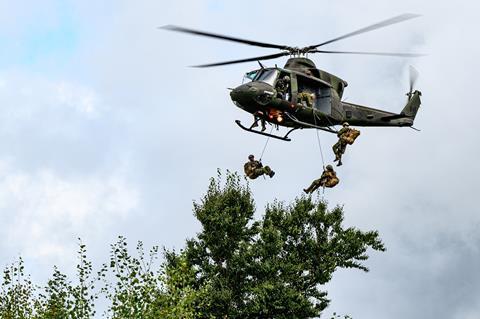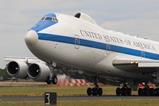Canada will spend billions of dollars on military modernisation in the coming decades, including the acquisition of a new tactical helicopter fleet.
Ottawa on 8 April announced the new initiative, which the government is calling “Our North, Strong and Free”. The plan builds on Canada’s previous defence strategy from 2017, responding to what Ottawa calls “significant global shifts” witnessed in the ensuing years.
“The most urgent and important task we face is asserting Canada’s sovereignty in the Arctic and northern regions, where the changing physical and geopolitical landscapes have created new threats and vulnerabilities,” the government of Prime Minister Justin Trudeau says.
Broadly speaking, the plan aims to raise Canada’s ratio of defence spending to gross domestic product to 1.76% by 2030. In 2023 that figure was around 1.25%, according to the latest figures from NATO headquarters.

Members of the 32-country military alliance commit to spending at least the equivalent of 2% of GDP on defence, although in practice many governments fall short.
The Our North plan will invest $8.1 billion (C$5.9 billion) over the next five years, and $73 billion over the next 20 years on new capabilities for the Canadian armed forces (CAF).
Among the areas being targeted is rotary aviation. Ottawa says it will spend some $13.5 billion over the next 20 years to acquire a “modern, mobile, and effective tactical helicopter capability”.
“It will provide the CAF with the speed and airlift capacity to assert Canada’s sovereignty and respond to natural disasters and emergencies throughout the country,” the Trudeau government says.
The Royal Canadian Air Force (RCAF) currently operates 82 Bell 412 helicopters, with the type locally designated the CH-146 Griffon. Representing the country’s primary utility and troop transport platform, Ottawa currently plans to operate the CH-146 until at least the mid-2030s under a $1.6 billion sustainment contract announced in January.
Canada’s rotary fleet is supplemented by 13 twin-rotor Boeing CH-47F Chinook heavy-lift helicopters, according to Cirium data.
Ottawa did not reveal details on which aircraft it may be considering to replace the Griffon. An obvious choice would be the combat-proven Sikorsky UH-60 Black Hawk, which is widely used by allies and has a fully active production line.

Another Bell aircraft could also be an option, including the latest UH-1Y Venom or the next-generation V-280 Valor tiltrotor, which the US Army selected as its next-generation troop-carrying assault aircraft.
Bell already has deep ties to Canadian manufacturing. The Textron subsidiary currently assembles all of its commercial helicopters in Mirabel, Quebec, employing some 1,300 people at the site.
That is potentially significant, as Canadian law requires government procurement programmes to offer substantial economic benefits domestically, including jobs and revenue for Canadian companies.
While Bell currently produces the UH-1Y in Amarillo, Texas, the company may be strongly positioned for a tender considering domestic economic benefits to Canada.
Sikorsky produces the Black Hawk line in Stratford, Connecticut.
In addition to rotorcraft modernisation, Ottawa plans to spend $226 million over 20 years on new airborne early warning aircraft to support operations at the joint US-Canada North American Aerospace Defense Command.
A likely candidate for this platform is Boeing’s E-7 Wedgetail, which is currently in service with or on contract for Australia, South Korea, Turkey, the UK and the USA.
Other initiatives listed in the new defence strategy without specific funding commitments include expanding integrated air and missile defence capabilities and retrofitting offshore naval patrol ships to embark and operate military helicopters.
Ottawa also says it will explore options for acquiring a “suite of surveillance and strike drones and counter-drone capabilities”.
The RCAF is already in the process of acquiring 11 General Atomics Aeronautical Systems MQ-9B remotely piloted aircraft.
























